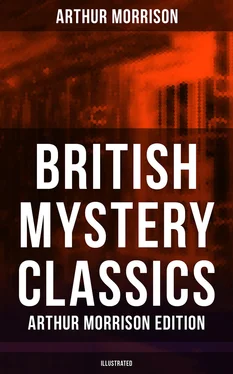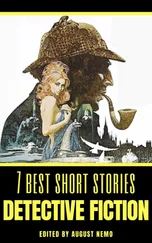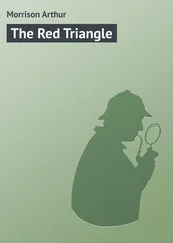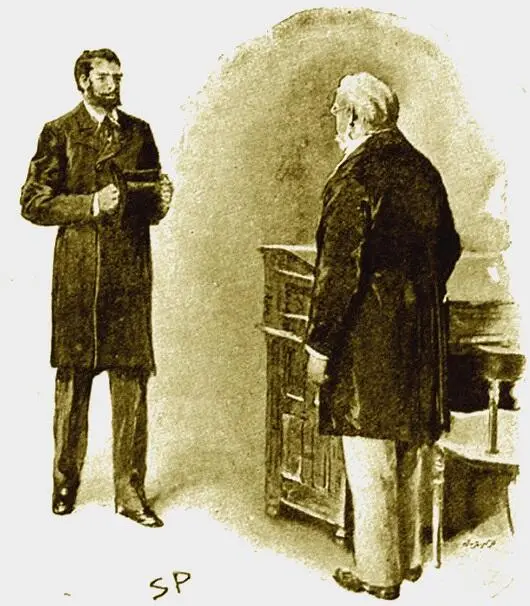
The reward remained on offer for a long time; indeed, it was never publicly withdrawn, I believe, even at the time of Claridge’s death. And several intelligent newspapers enlarged upon the fact that an ordinary burglar had completely baffled and defeated the boasted acumen of Mr. Martin Hewitt, the well-known private detective.
The Affair of the Tortoise
Table of Contents
VERY often Hewitt was tempted, by the fascination of some particularly odd case, to neglect his other affairs to follow up a matter that from a business point of view was of little or no value to him. As a rule, he had a sufficient regard for his own interests to resist such temptations, but in one curious case, at least, I believe he allowed it largely to influence him. It was certainly an extremely odd case—one of those affairs that, coming to light at intervals, but more often remaining unheard of by the general public, convince one that, after all, there is very little extravagance about Mr. R.L. Stevenson’s bizarre imaginings of doings in London in his ‘New Arabian Nights.’ “There is nothing in this world that is at all possible,” I have often heard Martin Hewitt say, “that has not happened or is not happening in London.” Certainly he had opportunities of knowing.
The case I have referred to occurred some time before my own acquaintance with him began—in 1878, in fact. He had called one Monday morning at an office in regard to something connected with one of those uninteresting, though often difficult, cases which formed, perhaps, the bulk of his practice, when he was informed of a most mysterious murder that had taken place in another part of the same building on the previous Saturday afternoon. Owing to the circumstances of the case, only the vaguest account had appeared in the morning papers, and even this, as it chanced, Hewitt had not read.
The building was one of a new row in a partly rebuilt street near the National Gallery. The whole row had been built by a speculator for the purpose of letting out in flats, suites of chambers, and in one or two cases, on the ground floors, offices. The rooms had let very well, and to desirable tenants, as a rule. The least satisfactory tenant, the proprietor reluctantly admitted, was a Mr. Rameau, a negro gentleman, single, who had three rooms on the top floor but one of the particular building that Hewitt was visiting. His rent was paid regularly, but his behavior had produced complaints from other tenants. He got uproariously drunk, and screamed and howled in unknown tongues. He fell asleep on the staircase, and ladies were afraid to pass. He bawled rough chaff down the stairs and along the corridors at butcher-boys and messengers, and played on errand-boys brutal practical jokes that ended in police-court summonses. He once had a way of sliding down the balusters, shouting: “Ho! ho! ho! yah!” as he went, but as he was a big, heavy man, and the balusters had been built for different treatment, he had very soon and very firmly been requested to stop it. He had plenty of money, and spent it freely; but it was generally felt that there was too much of the light-hearted savage about him to fit him to live among quiet people.
How much longer the landlord would have stood this sort of thing, Hewitt’s informant said, was a matter of conjecture, for on the Saturday afternoon in question the tenancy had come to a startling full-stop. Rameau had been murdered in his room, and the body had, in the most unaccountable fashion, been secretly removed from the premises.
The strongest possible suspicion pointed to a man who had been employed in shoveling and carrying coals, cleaning windows, and chopping wood for several of the buildings, and who had left that very Saturday. The crime had, in fact, been committed with this man’s chopper, and the man himself had been heard, again and again, to threaten Ramean, who, in his brutal fashion, had made a butt of him. This man was a Frenchman, Victor Goujon by name, who had lost his employment as a watchmaker by reason of an injury to his right hand, which destroyed its steadiness, and so he had fallen upon evil days and odd jobs.
He was a little man of no great strength, but extraordinarily excitable, and the coarse gibes and horse-play of the big negro drove him almost to madness. Rameau would often, after some more than ordinarily outrageous attack, contemptuously fling Goujon a shilling, which the little Frenchman, although wanting a shilling badly enough, would hurl back in his face, almost weeping with impotent rage. “Pig! Canaille! ” he would scream. “Dirty pig of Africa! Take your sheelin’ to vere you ‘ave stole it! Voleur . Pig!”
There was a tortoise living in the basement, of which Goujon had made rather a pet, and the negro would sometimes use this animal as a missile, flinging it at the little Frenchman’s head. On one such occasion the tortoise struck the wall so forcibly as to break its shell, and then Goujon seized a shovel and rushed at his tormentor with such blind fury that the latter made a bolt of it. These were but a few of the passages between Rameau and the fuel-porter, but they illustrate the state of feeling between them.
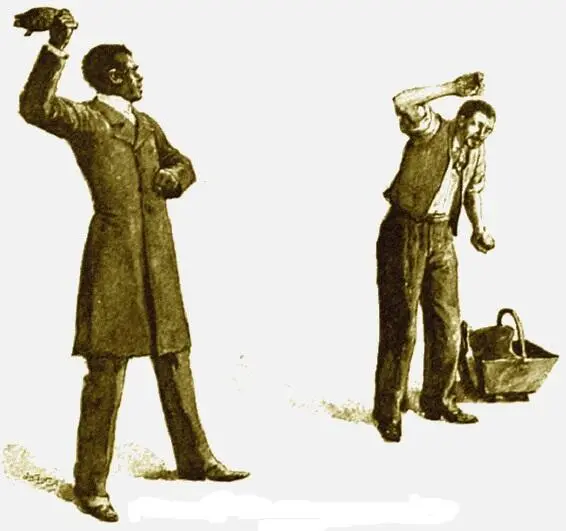
Goujon, after correspondence with a relative in France who offered him work, gave notice to leave, which expired on the day of the crime. At about three that afternoon a housemaid, proceeding toward Rameau’s rooms, met Goujon as he was going away. Goujon bade her good-by, and, pointing in the direction of Rameau’s rooms, said exultantly: “Dere shall be no more of the black pig for me; vit ‘im I ‘ave done for. Zut! I mock me of ‘im! ‘E vill never tracasser me no more.” And he went away.
The girl went to the outer door of Rameau’s rooms, knocked, and got no reply. Concluding that the tenant was out, she was about to use her keys, when she found that the door was unlocked. She passed through the lobby and into the sitting-room, and there fell in a dead faint at the sight that met her eyes. Rameau lay with his back across the sofa and his head—drooping within an inch of the ground. On the head was a fearful gash, and below it was a pool of blood.
The girl must have lain unconscious for about ten minutes. When she came to her senses, she dragged herself, terrified, from the room and up to the housekeeper’s apartments, where, being an excitable and nervous creature, she only screamed “Murder!” and immediately fell in a fit of hysterics that lasted three-quarters of an hour. When at last she came to herself, she told her story, and, the hall-porter having been summoned, Rameau’s rooms were again approached.
The blood still lay on the floor, and the chopper, with which the crime had evidently been committed, rested against the fender; but the body had vanished! A search was at once made, but no trace of it could be seen anywhere. It seemed impossible that it could have been carried out of the building, for the hall-porter must at once have noticed anybody leaving with so bulky a burden. Still, in the building it was not to be found.
When Hewitt was informed of these things on Monday, the police were, of course, still in possession of Rameau’s rooms. Inspector Nettings, Hewitt was told, was in charge of the case, and as the inspector was an acquaintance of his, and was then in the rooms upstairs, Hewitt went up to see him.
Nettings was pleased to see Hewitt, and invited him to look around the rooms. “Perhaps you can spot something we have overlooked,” he said. “Though it’s not a case there can be much doubt about.”
Читать дальше
